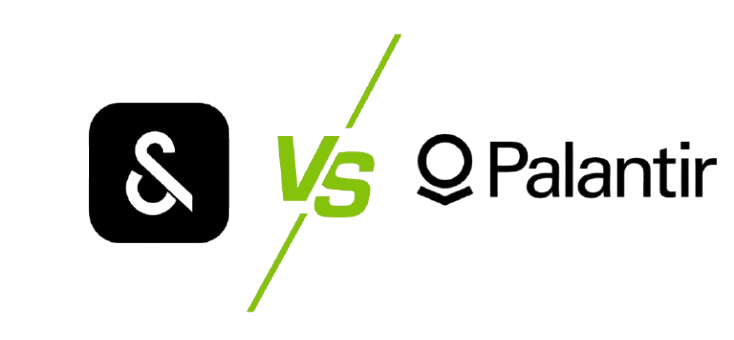
Supervity redefines enterprise automation with AI Employees, while Palantir focuses on large-scale data analytics. Discover which platform suits your business needs best.
Deploy your first AI Employee in just days, not weeks.
Empower business teams to build and launch automations with zero code.
Built from the ground up to handle judgment, complexity, and unstructured data.
One subscription. No hidden costs. No license jungle.
Automates full job functions, not just repetitive clicks.




Built for teams that want results without the wait
If you lead HR, Sales, Finance, or IT Support and your ideas sit in an IT queue, Supervity gives your team the power to launch AI Employees without the wait or the red tape.
You want serious automation results but don’t have a squad of RPA developers or endless budget. Supervity gives you everything you need without the complexity you don’t.
Have a real business problem you need solved now? From onboarding to lead follow-up, Supervity helps you deploy live, working solutions in days, not quarters.
Yes. Supervity is an excellent alternative to Palantir if your primary goal is automation rather than analytics. While Palantir specializes in data integration, modeling, and visualization, Supervity focuses on AI-powered process automation through autonomous AI Employees. If you need to execute business workflows across multiple systems without manual intervention, Supervity offers a faster and more scalable solution.
Palantir is primarily a data analytics and decision intelligence platform, designed for data engineers and analysts who need to model, visualize, and derive insights from large datasets. In contrast, Supervity empowers business users to deploy no-code AI Employees that autonomously execute multi-step workflows across enterprise systems. While Palantir helps you understand your data, Supervity enables you to act on it instantly.
Absolutely. Supervity AI Employees are designed to handle end-to-end business processes without human intervention. Whether it’s employee onboarding, payroll processing, invoice reconciliation, or financial approvals, Supervity can manage these workflows seamlessly. Unlike analytics tools, Supervity doesn’t just generate insights—it completes the work for you.
No. Supervity is built for business teams, not just developers. Its no-code platform allows HR, Finance, Sales, and Operations teams to configure and deploy AI Employees without writing a single line of code. This reduces IT dependencies, speeds up implementation, and empowers departments to automate processes independently.
Supervity can typically be deployed within a few weeks, thanks to its plug-and-play architecture and no-code setup. On the other hand, Palantir implementations are generally longer and more complex, often requiring data engineers, consultants, and custom configurations. If speed to value is your priority, Supervity offers a clear advantage.
Organizations focused on reducing manual operations and automating cross-departmental processes will benefit more from Supervity. It is ideal for teams that want AI Employees to handle real business tasks, such as HR onboarding, financial reconciliations, and sales operations. Palantir, on the other hand, is better suited for companies whose primary objective is data analysis, reporting, and predictive modeling.
Yes. Supervity integrates seamlessly with CRM, ERP, HRIS, and financial systems such as Salesforce, SAP, Workday, and others. AI Employees can interact across multiple platforms to complete workflows end-to-end, eliminating the need for manual data transfers or disconnected processes.
Palantir’s strength lies in data integration, modeling, and visualization, making it one of the most powerful analytics platforms available. However, it does not natively automate processes or execute tasks. Supervity complements this gap by enabling action-oriented automation on top of existing data insights.
If you are evaluating alternatives focused on business process automation, top contenders include Supervity, UiPath, and Automation Anywhere. Among these, Supervity stands out because it focuses on autonomous AI Employees capable of completing entire workflows without human intervention, rather than relying solely on rule-based RPA.
Yes. Many enterprises successfully use Palantir for analytics and Supervity for execution. For example, Palantir can surface a data-driven insight—like identifying high-risk transactions—while Supervity AI Employees automatically trigger remediation workflows. This creates a powerful combination of decision intelligence and autonomous action.